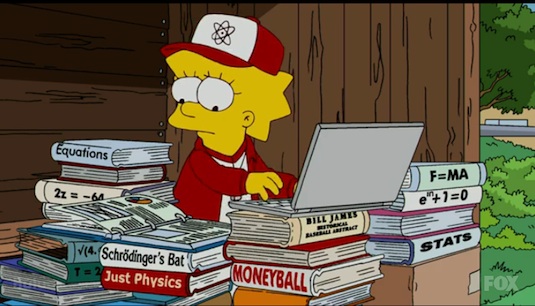
There has always been a perceived tension between pro-analytics baseball fans and anti-analytics fans. The battle is already over and done with in front offices, as both have been able to coexist, but there are still fans who disagree. Really, most of the disagreements are caused by ignorance towards the other side or just a lack of knowledge. For people to understand sabermetrics, they must get past some of the biggest myths. Here are a few of those myths, debunked.
Myth #1: We ignore human emotion and intangibles.
Absolutely false. Intangibles, clubhouse chemistry, and more are all part of the thought process of a sabermetric front office (and the ideal sabermetric fan). Look at Paul DePodesta, known by some traditionalists as anti-intangibles, he talked non-stop after the draft about how he loved the personalities of some of the organization’s draft picks. He says it is a big part of how he drafts, even with the Mets being one of the most sabermetric teams in the game.
When you look at traditional statistics, it doesn’t incorporate intangibles or emotion either. Neither traditional nor sabermetric stats do, so it’s not just a sabermetric problem. Every organization has their own method for evaluating players, with some weighing personality, intangibles, and clubhouse chemistry more than others. That has existed much longer than sabermetrics has.
Myth #2: It’s all about the numbers — and nothing else.
 This covers a bit of the first point, but also enters another important topic: scouting. Some think that sabermetric teams (which now includes all but one or two teams in baseball) don’t emphasize scouting, or rely too much on their metrics.
This covers a bit of the first point, but also enters another important topic: scouting. Some think that sabermetric teams (which now includes all but one or two teams in baseball) don’t emphasize scouting, or rely too much on their metrics.
I can’t tell you how a front office operates in that regard, but I can tell you that as someone who embraces sabermetrics, I value scouting.
Just as statistics can be predictive of a player’s future success, a scout can see the mechanics of a hitter’s swing and see unlimited potential, even when the numbers might say otherwise. Sometimes it’s the players that don’t succeed at first, but go on to have great careers.
While some may think statisticians don’t take anything but numbers into account (They think this because former players never become analysts, they become scouts), it’s simply untrue.
Myth #3: The stats are subjective.
Here is where the importance of being informed comes in (if it hadn’t already). The purpose of sabermetrics is to look at the game of baseball in the least subjective way possible. The goal isn’t to take human emotion out of the game, but to take human emotion out of the way we evaluate the game.
There are often players who are “counted out” and cast aside. Take Josh Satin, for example. Satin didn’t receive any significant big league playing time until he was 28 years old, mostly due to his age. Satin played four years in college, and wasn’t aggressively promoted. That meant he eventually fell out of “prospect” status and was never promoted. He put up minor league numbers on par with David Wright‘s, yet he didn’t get a promotion until many years later. That’s what sabermetrics looks to eliminate. Players who are too fat, too old, too short, have unique/complicated mechanics, are frequently not given an opportunity. It really doesn’t matter if players have these traits if they can provide the same production as a “normal” player.
Back to the point. People tend to look at the coefficients of a statistic like wOBA (weighted On Base Average) and say it’s subjective, that the creator of the stat just chose the coefficients. But why would a group of people who strive to be as least subjective as possible arbitrarily choose coefficients to put into their equations? That answer is: they don’t.
Take my example of wOBA. The equation changes slightly every year, but here is the equation from the 2012 season:
wOBA = (0.691×uBB + 0.722×HBP + 0.884×1B + 1.257×2B + 1.593×3B +
2.058×HR) / (AB + BB – IBB + SF + HBP)
Those numbers may seem random, but they are actually based on run expectancy, or how a particular event influence’s a team’s chances of scoring, which is what baseball is all about.
Slugging percentage tries to value events, but only does so for hits, and itself values the hits subjectively.
Is a team with a man on third three times as likely to score as a team who only has a man on first? Over one hundred years of baseball tell us no. Notice how an unintentional walk (uBB) isn’t worth the same as a single. This is because runners on base only advance one base (and only on a force) when the batter walks, while runners often advance multiple bases when the batter hits a single. This difference is statistically significant, and it is taken into account in this stat. See how this is all starting to come together?
* * * * * * * * *
There is a stigma surrounding analytics in baseball, just as there is in the rest of the non-sports world. People don’t like to believe that what they see (or how they perceive what they think) could be wrong.
It’s why people working for financial companies get frustrated when their economists put out bad projections, even when the economy is thriving. It’s really not about choosing one side or the other. It’s about acknowledging the pros and cons of each and using what you can see and what you can’t see together. That’s the best way to evaluate a baseball team.
















